Mountain pine "Mugus": description, tips for growing and reproduction
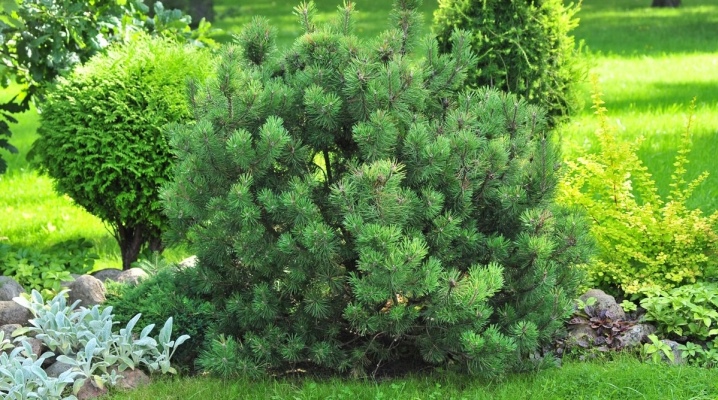
"Mugus" is one of the natural forms of mountain pine, which is often used in landscape design. This is due to the plasticity of culture, which allows the tree to take interesting decorative forms and decorate private gardens. In order for the pine to please the gardener for many years, you need to study all the features of its planting and growing.
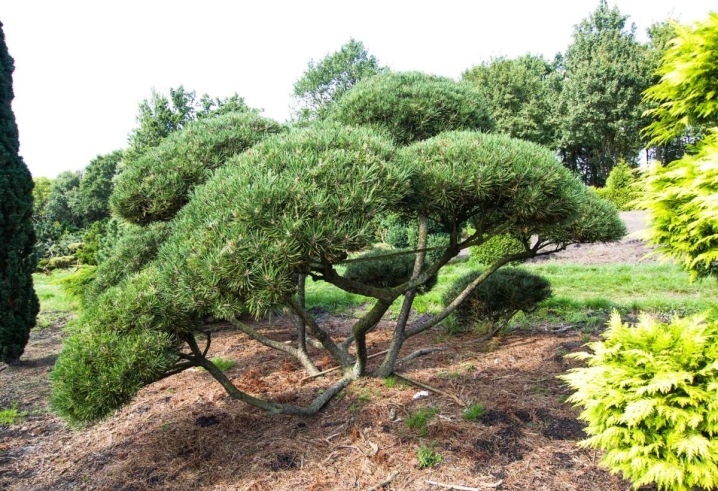
Description of the variety
The presented species grows in the mountains above other conifers, mountain varieties mainly grow in Central and Southern Europe, in the Carpathians. On sale can be offered under the Latin name Pinus Mugo Mughus. The height of the shrub reaches two meters, but rare specimens are capable of reaching 10 m in size.The tree has a wide massive crown, the width of which can be 3-4 m.
The culture is characterized by slow growth - the average annual growth is 10-12 cm.
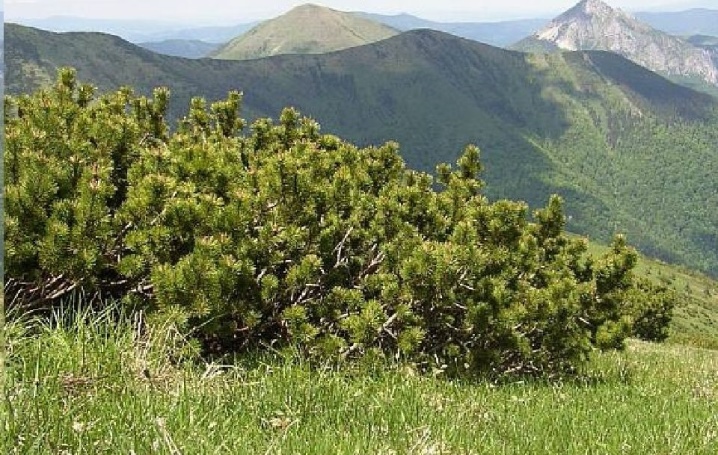
Pine "Mugus" is decorated with very aesthetic needles. In spring, the needles are light green in color, and by autumn they are covered with a dark green tint. The needles are dense, dense, growing on shoots up to 5 years. At the ends of the branches grow neat 5-centimeter cones of a golden hue.
This plant loves light and warmth, although it can withstand harsh winters.
Pine is not particularly picky about the soil, but does not like dense and dry soil. The tree has a well-branched shallow root system.
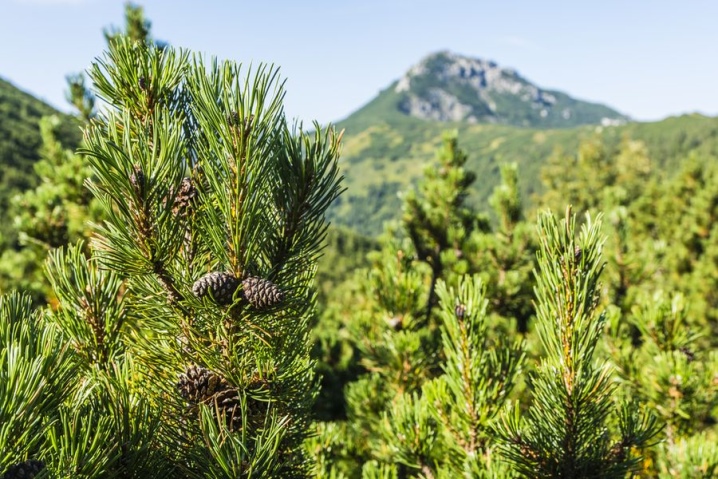
Landing
An important criterion for planting the Mugus pine is the choice of the site. So, knowing that this is a light-loving culture, you need to prepare an open place, unobstructed by buildings and other trees. This variety does not impose strict requirements on the soil, but it will feel more comfortable on sandy loam soil with low acidity.
The optimal time for planting is spring. Then, before frost, the young tree will have time to adapt to a new place, and its root system will already get stronger.

The planting process consists of several stages.
- Dig a planting hole up to 1 m deep and slightly wider than the seedling rhizome.
- Make a drainage layer about 20 cm from the small stones at the bottom.
- Pour a mixture of earth and sand into the hole.
- Carefully place the planting material in the hole and cover the free space with soil.
- Water the planting site thoroughly and mulch the soil around the seedling.
- If a group planting is planned, then the recommended distance between two copies is at least 1.5 m.
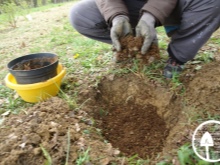
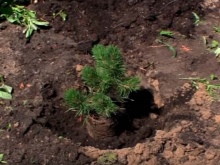
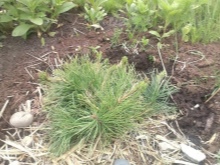
Care
In order for a tree to develop correctly and please the eye, it needs proper care.
Watering
It is necessary to water abundantly mountain pine only at a young age. Overflows can negatively affect the condition of the tree.
Waterlogging is dangerous for a plant, but it will withstand drought well.
Until the age of 10, it is customary to water the pine every week in the summer. Older specimens need monthly watering. One portion for a tree - 50 liters of water.
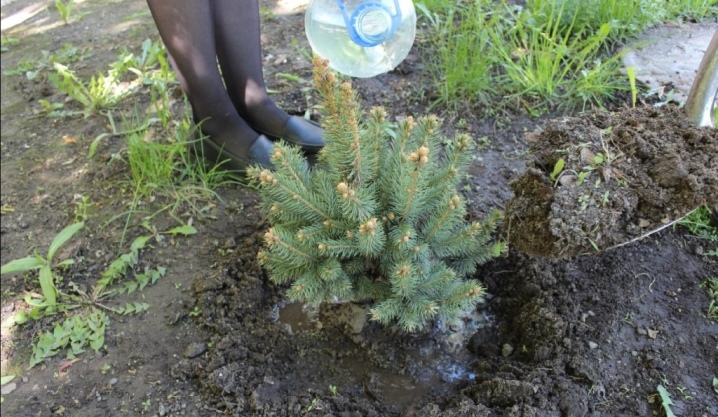
Top dressing
It is customary to apply fertilizers up to the same age.
In the spring, it is recommended to use mixtures with a nitrogen content; in the fall, dressings with potassium and phosphorus are more suitable.
After 10 years of age, the tree can not be fed, although if it is planted in unfavorable conditions, for example, near production, it will not refuse additional nutrition.
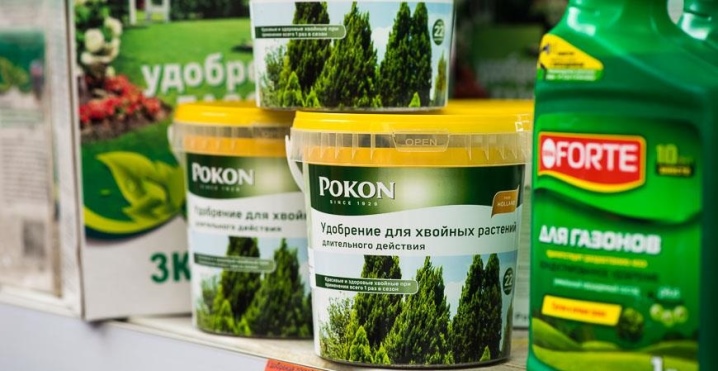
At any age, the plant can be fertilized with foliar complexes with magnesium sulfate and "Epin" or "Zircon". These components are useful in micronutrient deficiencies, in addition, they will increase the resistance of the variety to poor conditions, such as air pollution.


Pruning
This species is a slow growing one and only needs sanitary pruning.
It is important to remove dry, damaged and frozen branches.
To increase decorativeness, some gardeners pinch off 1/3 of the growth in the spring, although the appearance of a pine tree looks very impressive even without this procedure.
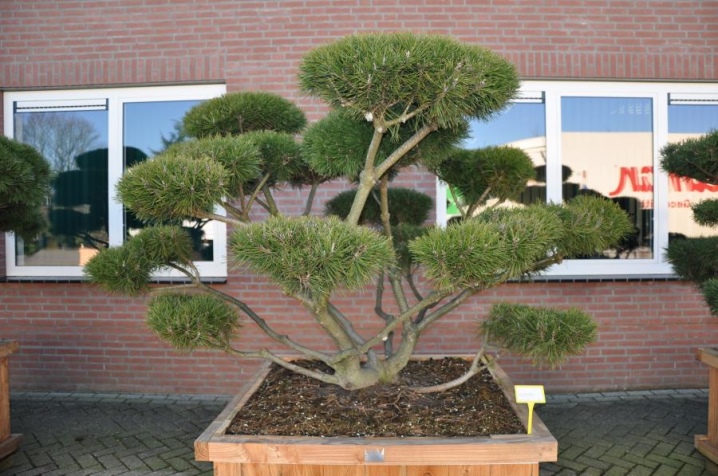
Disease and pest control
The tree is distinguished by high immunity and is not susceptible to various diseases, however, it cannot always resist blistering rust or chariot. The presence of the disease is indicated by the formation of a yellowish plaque at the ends of the needles.
All specimens affected by the disease must be destroyed, and it is important to treat the place where they were planted with a solution of copper sulfate.
The fact is that the disease cannot be treated, and the only way to protect neighboring plantings from the disease is to eliminate diseased trees.
As a preventive measure, you can resort to the help of funds that contain copper. Pine needs to be processed twice a year - in early spring and in autumn one month before the onset of frost.
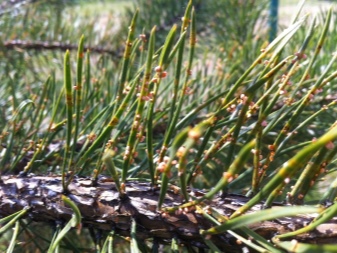

Also, trees can fall prey to another disease - scleroderiosis. This infection starts from the crown of the crown. The main factor in the onset of the disease is an incorrectly performed pruning procedure or a complete rejection of this manipulation.
For treatment, it is necessary to remove all damaged fragments of the tree to healthy tissues and perform sanitary pruning. Places of cuts should be treated with a solution of copper sulfate.
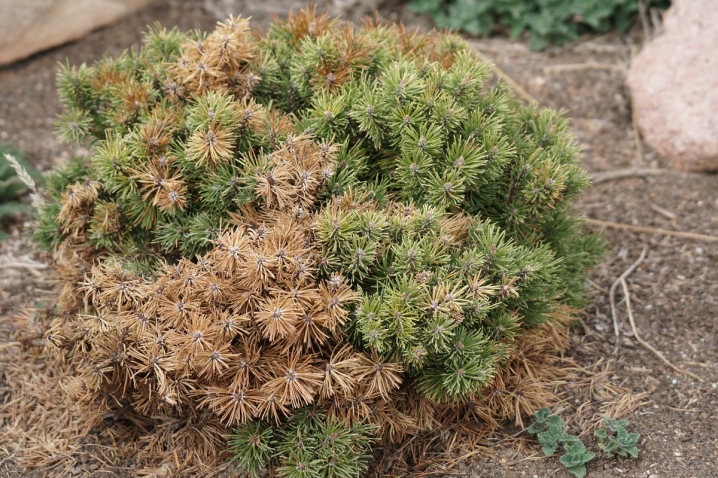
As for pests, caterpillars and aphids love the Mugus variety most of all. They attack the tree in wet, cloudy weather, and too dense bushes are also favorable conditions for these insects. Individuals settle on needles and young shoots and suck the juice out of them.
The most effective insecticides for controlling aphids and caterpillars are Actellik, Aktara, Fundazol or Decis.
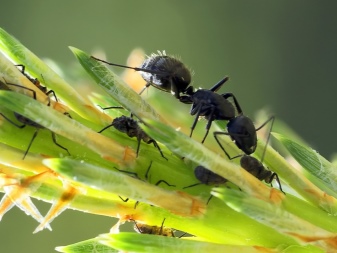
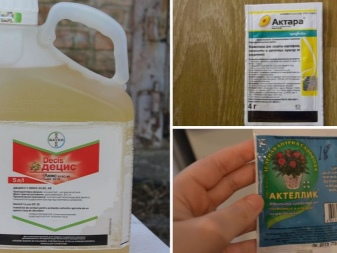
To avoid disease and insect infestation, it is recommended to follow simple preventive measures:
- use only strong healthy seedlings with an integral trunk when planting;
- plant pine trees in an area away from swampy areas;
- when planting in a group, do not plant the plants too close to each other;
- loosen the soil around the trunk in a timely manner, water and feed the tree;
- treat the culture with special means twice a year;
- destroy damaged bushes.

Preparing for winter
If pine is grown in cold climates, then in the first two winters it needs insulation. Before winter, you can lay out a thick layer of mulch, for example, peat, under the tree, and cover the specimen with a white non-woven material. Some gardeners install a cardboard box with holes on the tree, but in practice it can be quite problematic to secure it so that it is not ripped off by a gust of wind.
A matured pine tree will be able to winter calmly and without additional protection.

How to reproduce?
There are three ways to breed Mugus pines.
Growing from seeds
The most effective way to propagate a tree.
Before planting seeds at home, it is recommended to harden them.
For example, you can keep them on the bottom shelf of the refrigerator for a month, and then the grains will quickly adapt to later life in the fresh air.
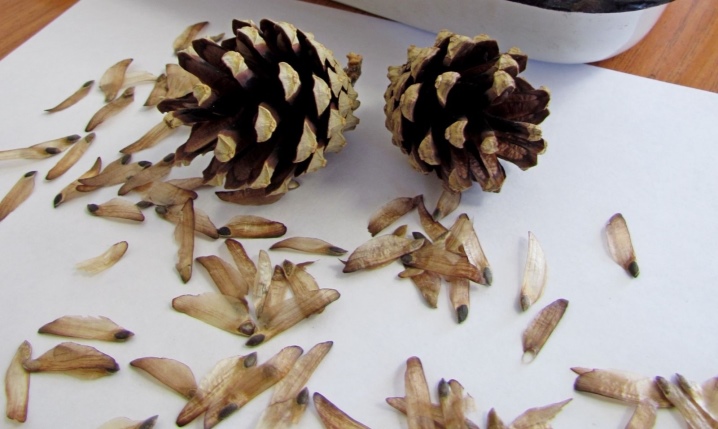
The soil used for seedlings is suitable as a soil. Some gardeners advise adding a small amount of peat on top.
Before planting indoors, it is advisable to process the planting material in a weak solution of potassium permanganate.
Further, the grains go deep into the ground at a distance of 5 cm from each other.Then the container is wrapped in a foil with holes, and after a month you can observe how the first shoots hatch. Young twigs are planted in open ground after two years.
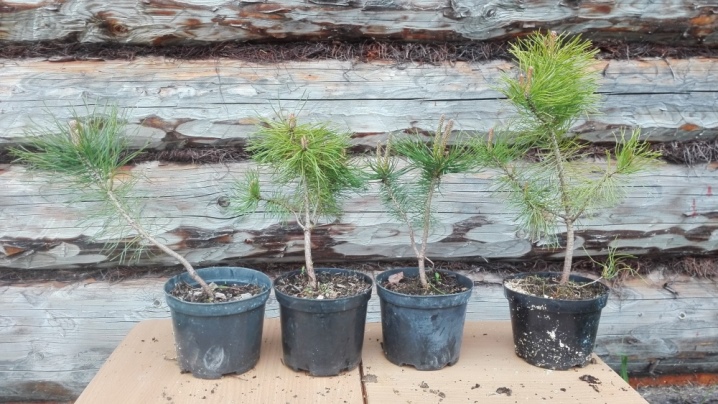
Propagation by cuttings
This technology allows the procedure to be performed in the winter. In February, conifers begin to sap, and during this period it is very convenient to root cuttings. The planting material should be 7-15 cm long, it is lowered for half a day in the Epin solution. At this time, slightly moistened sphagnum should be spread on gauze.

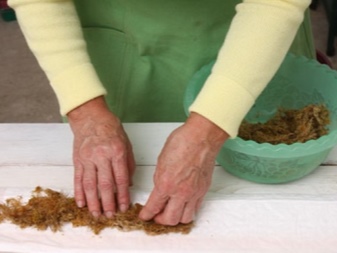
The tips of the cuttings are processed with Kornevin, after which they are placed on sphagnum and covered with gauze. Next, the entire structure is rolled up, placed in a bag and hung out of the window. Until spring, the cuttings should root, after which they can be transplanted into pots with nutritious soil. After a couple of months, you can plant shoots on the site.
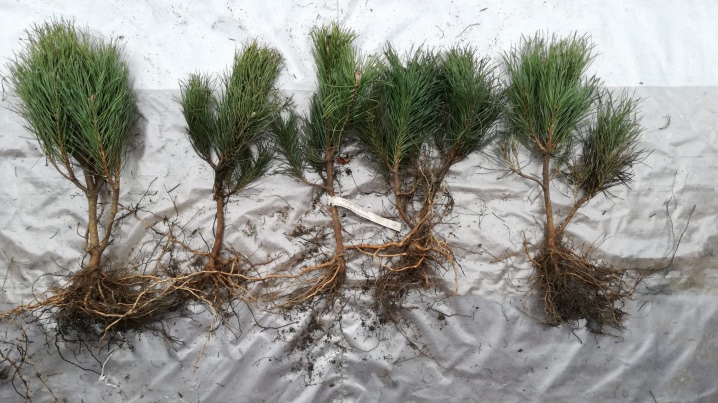
Graft
The least popular method in the world of gardening. The fact is that it is very long and painstaking, moreover, it cannot always be crowned with success. But it is this reproduction method that makes it possible to obtain a tree that, in terms of its characteristics, will be identical to the mother plant.
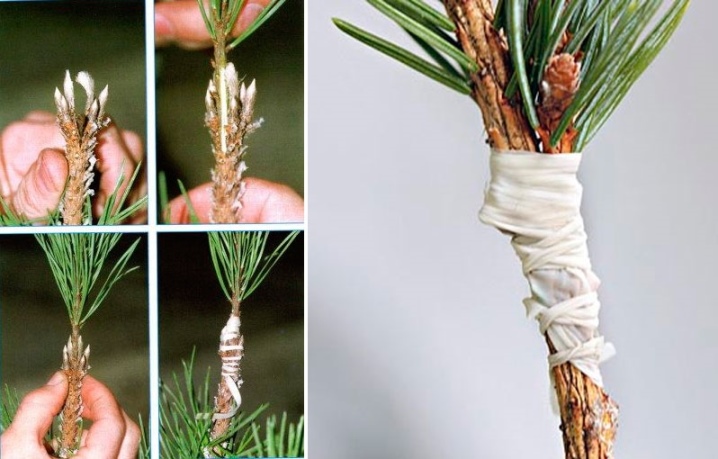
Examples in landscape design
Most often, shrub forms of pine are used in landscape design, but even in the form of a tree, this plant looks quite impressive.
A green tree looks very aesthetically pleasing in the winter months on a snow-white background.
The decorative pine tree attracts attention because it combines a solemn appearance and delicate modesty at the same time.and for these features it can be used in many garden compositions.
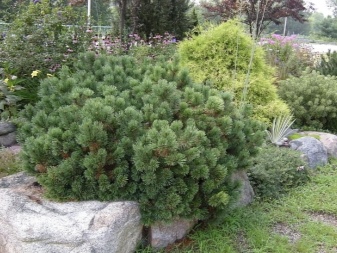
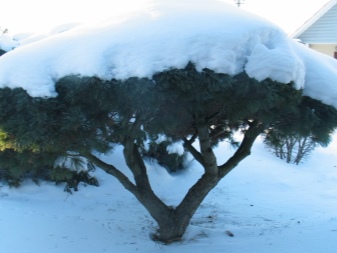
Green pine needles favorably emphasize the rich color palette of other plants. You can decorate rock gardens, rock gardens with these trees, decorate the slopes of ravines. The pine trees of the presented variety look beautiful as hedges, they gracefully frame garden alleys, majestically rise above the curbs, adorn Japanese gardens.
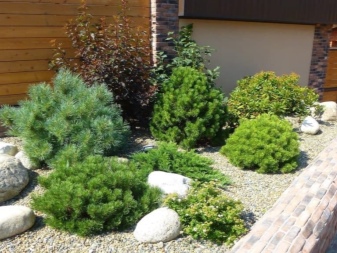
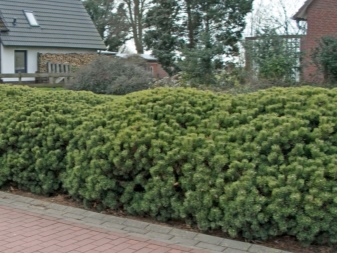
An impressive composition is obtained by planting a Mugus pine with a weeping larch. Grain crops, lily varieties, decorative moss, beautiful herbaceous crops will complement the fabulous landscape. A picturesque picture will be obtained by combining pine with rose bushes.
True, these crops prefer a different type of soil, but roses are allowed to be grown in flowerpots. By the way, this fragrant shrub will effectively protect its coniferous neighbor from harmful insects.
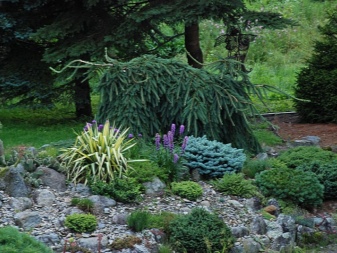
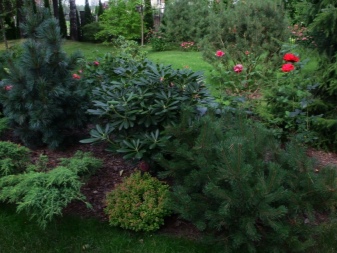
Dwarf pine looks harmoniously next to exotic grasses and ornamental maples, but when making a combination, it is important to take into account the requirements of different crops to the soil composition. Pine "Mugus" is used in a variety of compositions, its plasticity allows the gardener to experiment and give the crown the most unusual shapes. In addition to its aesthetic qualities, this tree forms phytoncides useful for human and plant health, purifies the air, and fills the garden with a pleasant aroma.
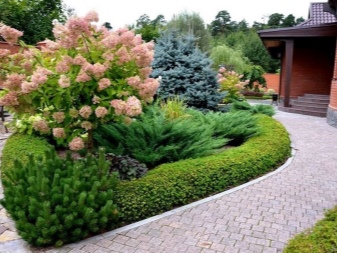
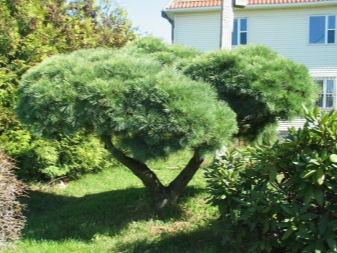
Tips for planting and caring for a mountain pine can be found in the following video.



































































The comment was sent successfully.